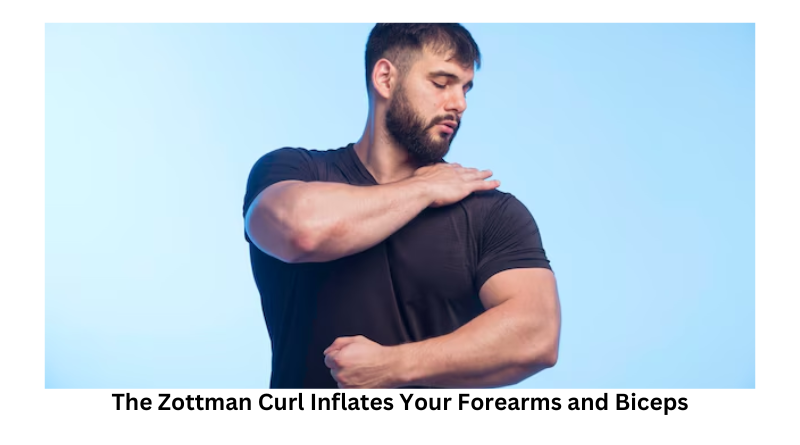The Zottman Curl Inflates Your Forearms and Biceps
One of the best muscleman exercises is BICEPS CURLS. Enter any respectable gym, go to the free weight area, and observe for a little while. Someone will inevitably pick up a pair of dumbbells and begin pounding. However, repeatedly performing the same exercise becomes monotonous, and lifters may adjust a number of elements to make their arm day exercises more challenging. Engaging in an underappreciated variant that enables you to pull double-duty to train your forearms is a dependable technique for pump-chasers to add a fresh twist to their curl practice. We are discussing the Zottman curl.
Furthermore, the Zottman curl is not a highly advanced, cutting-edge invention. George Zottman, an old-time strongman, created the exercise in the 19th century to simultaneously work the biceps, brachialis, and forearms.
Your curl workout will yield even greater benefits if you put it into practice. The catch is that you must exercise patience and pay attention to every aspect of the lift. Although you should already do it with every workout, the Zottman curl is even more crucial since the concentric and eccentric portions of the action are oriented differently.
Take notes as senior editor Brett Williams, NASM-CPT, and Men’s Health fitness director Ebenezer Samuel, C.S.C.S., reintroduce you to this traditional double-powered arm-builder so you can learn its intricacies.
The Zottman Curl: A Guide
Hold a pair of dumbbells in a neutral stance while standing. As you use your abs to push your rib cage down and closed, squeeze your glutes and shoulder blades.
Squeeze your biceps at the top as you curl the dumbbells up, turning your pinkies upward and twisting your palms.
After a brief pause, rotate the dumbbells solely at the forearms and twist them forward so your palms face out. As you move your wrists, try to maintain your elbows motionless.
Take two or three seconds to carefully lower the weights back to the beginning position.
Advantages of Zottman Curl
The Zottman curl is intended to work your forearms as well as your biceps, unlike most other curls that solely work the biceps (and occasionally the brachialis, like the hammer curl). It is regrettable that regular exercise splits too frequently overlook direct forearm training, despite the fact that strong forearms are the foundation of a firm grip and that the muscles are necessary for proportionately developed arms.
Muscles Worked By the Zottman Curl
Like other curls, the Zottman is a great way to target your biceps muscles. But you’ll also hit your forearms—more specifically, your brachioradialis muscle. That will come once you rotate the weights at the top of the first part of the movement, then will be emphasized with the slow eccentric descent.
Common Zottman Curl Mistakes
The most common mistake here is moving too fast. “If people are going to curl up, they’re going to twist quickly and they’re going to lower down way too quickly, then you lose that eccentric effect, you don’t get the most out of curl,” Samuel says.
Every step should be taken carefully; raise and supinate, squeeze your biceps at the top, rotate gently, and then drop on a count of two to three. Don’t just let go. Use lighter dumbbells if you have trouble controlling your fall.Because you’ll be concentrating on pauses and highlighting the squeeze at the peak of the lift, you can turn this into a real biceps isolation exercise. Because you will also be working your forearms, don’t neglect this part of the workout.
How to Incorporate the Zottman Curl into Your Exercise Routine
Avoid attempting to carry heavy objects with this accessory exercise because it is a forearm-focused action. For eight to ten repetitions, use weights that are 10 to 15 pounds less than you would typically use for a curl.
Samuel states, “You don’t want to have to rush through a bunch of reps.” “I would prefer that you get eight to ten solid repetitions and truly enjoy that eccentric—feel it in your biceps and forearms.”
